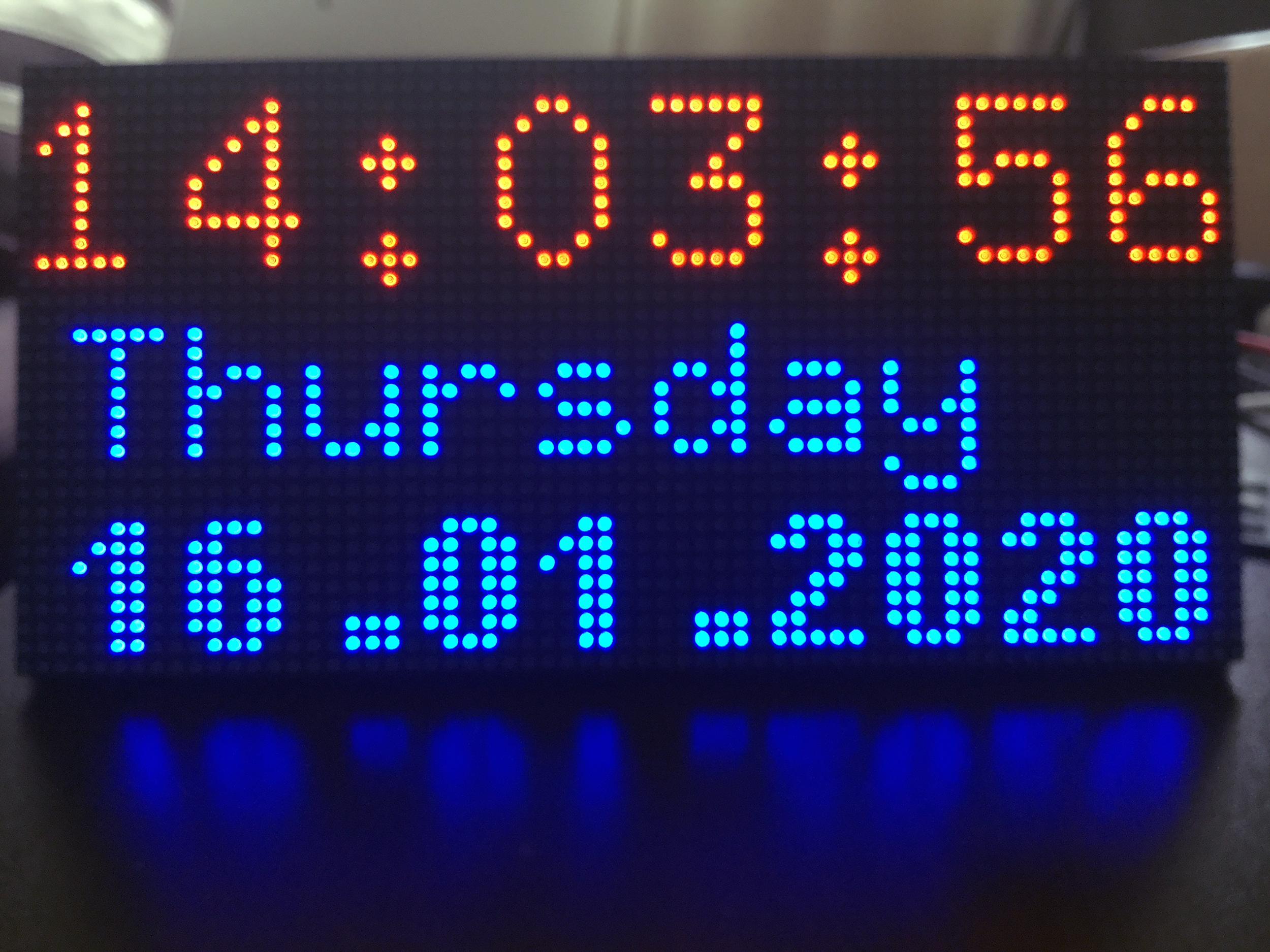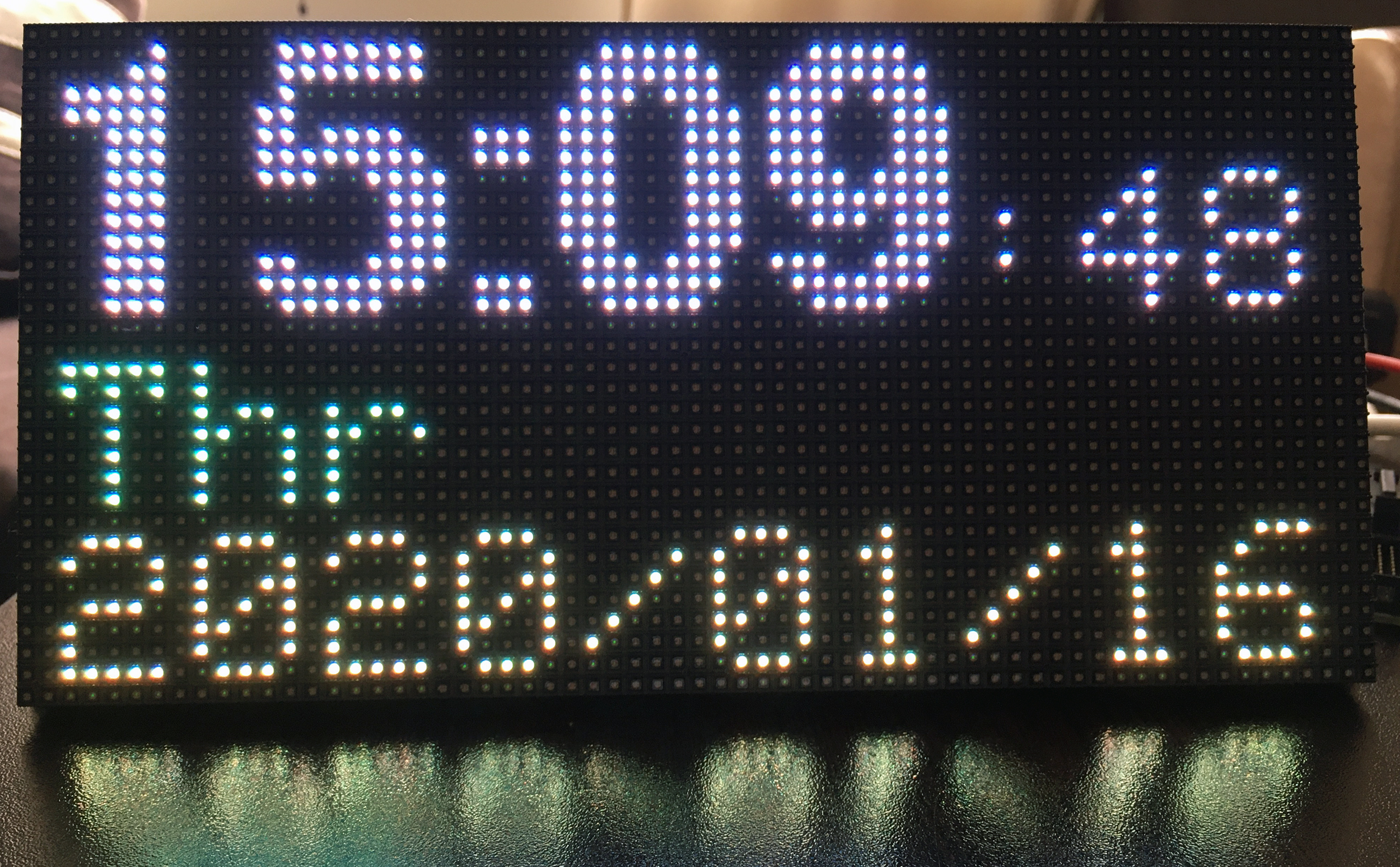Opis
What is it?
A RGB matrix panel with 2048 bright RGB LEDs arranged in 32 rows and 64 columns. Row and column driver circuits are built on the back side of the matrix panel. The data and control signal pins are accessible through a HUB75 (8×2 IDC) connector. It requires 13 of 14 digital I/O pins (depends of using library) of ESP32 for full color control. Most displays module comes with necessary cables (a ribbon cable and a power cable) for easy wiring between the RGB panel and the RGB matrix panel shield.
This board makes wiring them really simple! The board just slots directly onto the input header pin, uses the ribbon cable that comes provided with most of these panels to connect the pins of the output header and has screw terminals to connect the power cable that comes with most panels.
A little light soldering to attach the headers, connector and terminal block and you’re ready to rock. Plug it onto your microcontroller board, and you’ll be able to attach any RGB matrix with easy. This shield just takes care of the wiring for you!
Some panels won’t work with the 3.3V levels output by the ESP32, and we added 5V level shifting buffers.
RGB Matrix Panel Shield Features:
- Compatible with SmartMatrix and P3RGB64x32MatrixPanel libraries
- On board four 16 pin male header (2×8). Two of them are connected directly to the ESP32 board and have 3.3V logic levels. The other two are buffered and have 5V logic levels
- On board three logic buffer 74LCX245 (option)
- Operates at 5V (4A rated power supply is recommended)
- Dimensions are 100mm x 60mm
What will you get in the package?
Each RGB Matrix panel Shield is a kit and comes with the following:
- RGB Matrix panel Shield PCB
- 10uF 25V Capacitor
- 2 pcs 16 pin right angle male header (2×8)
- 2Pin Plug-in Screw Terminal Block Connector 5.08mm
What is NOT included?
The following components are not provided, but are required to use this board.
- RGB LED Matrix Panel module P4 256*128mm 64*32 pixels 1/16 Scan Indoor SMD – $10 from Aliexpress
- Power supply 5V 8A – $11 from Aliexpress
- ESP32 30P WROOM-32 Development Board – ~ $4 on Aliexpress OR Mini32 ESP32 Development Board – ~ $5 on Aliexpress
- 3 pcs logic buffer 74LCX245
Board assembly
To assemble the boards, place the parts on the PCB as indicated by the markings on the PCB. All parts are places on the top of the PCB (as seen in the photos).
ESP32 Development Board (30P WROOM-32 or Mini32 ESP32) is placed on the board in accordance with the marking (USB and Antena).
NOTE: Please pay attention to the polarity of the capacitor and the direction you are soldering the connectors!
Connecting the shield to the RGB LED matrix
Insert the ribbon cable that came with the display into the “Pout” connector on the shield (according to the used library and logical levels), insert the other end into the “Output” connector of the panel.
Plug the power wire that came with the display into the power pins of the panel. Attach the power wires to the 2Pin screw terminals on the shield (Pay close attention to the polarity!)
Configuring for libraries and logic level
You can use one of two libraries (SmartMatrix or P3RGB64x32MatrixPanel) to control the RGB LED matrix panels. Connect the matrix panel to the appropriate connector. The name of the library is marked on the PCB. Some panels do not work with 3.3V levels. To use 5V level, connect the RGB LED matrix panel to the connectors marked “5V” and set the jumper to the “ON” position. Setting the jumper to the “OFF” position turns off the logic buffers.
Powering the RGB Matrix panel Shield
These displays require a 5V power supply capable of doing roughly 4A of current
Use the 2×8 connector for data and use a separate 5V 2A or 5V 4A adapter directly to the panel.
Using the display
To use the display you will need to install the following libraries
SmartMatrix https://github.com/pixelmatix/SmartMatrix/tree/teensylc
P3RGB64x32MatrixPanel https://github.com/NeoCat/ESP32-P3RGB64x32MatrixPanel
It can be installed from the Arduino library manager or download directly.
Example sketch of using the board can be found in example directory of libraries.













